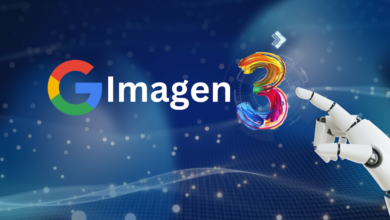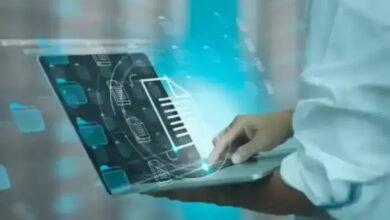Internet of Things: The future and its impact on our lives
The Internet of Things is currently advancing at such a rapid pace that annual forecasts of patterns seem outdated even before they are published as a blog entry or article. As innovation develops, it enables faster change and progress, accelerating the rate of progress, so that in the long run it ends up in accelerated growth.
Professions based on innovation do not change at that equivalent speed, however, they are evolving, and the sage in IT and IoT realizes that his job will not remain equivalent. The IT worker of the 21st century is always learning without having to if not want to.
I don’t get that meaning from you. This means staying current with innovation patterns. What’s more, it means keeping your eyes on the future, knowing the capabilities you have to know and the types of jobs you need to meet all the requirements.
Here are eight innovation patterns you should look for in 2021, and a portion of the careers these patterns will take. An opportunity to prepare yourself for one of these rising professions today is technical innovation and the Internet of Things.
Artificial Intelligence and the Internet of Things:
Man-made mental ability, or AI, has effectively gained a lot of buzz in recent times, yet it remains a pattern to watch as its effects on how we live, work, and play are only in the early periods. What’s more, it has created various parts of AI and the Internet of Things, including machine learning, which we’ll go under. Human-made intelligence worked on personal computer frameworks that worked to mirror human knowledge and perform tasks, for example, recognition of images, discourse or examples, and basic leadership. AI can do these tasks faster and more accurately than people.
Computer-based intelligence has existed since 1956 and is now generally used. The truth is that five out of six Americans use the benefits of artificial intelligence and the Internet of Things in some structure every day, including track apps, stream management, individual cellmates, ride-sharing apps, single housemates, and smart home gadgets. Although Jupiter is used, AI is used to plan trains, assess business risk, forecast support, and improve vitality effectiveness, among many other money-making undertakings.
Computer-based intelligence is one part of what we allude to widely as mechanization, and robotics is an interesting issue due to the misfortune of a potential occupation. State robot specialists will eliminate an additional 73 million occupations by 2030. However, bots are making occupations like layoffs, particularly in AI and the Internet of Things: Critics predict that the number of jobs in AI will reach 23 million.
Advanced programming, testing, and support, to give some examples. The man-made awareness designer is one such job. Some state information researchers will accept a long discount on the requirement of talented experts.
Machine Learning and the Internet of Things:
Machine learning and the Internet of Things are a subset of AI. With Machine machines, computers are programmed to learn to do something they are not programmed to do: they learn literally by discovering patterns and insights from data. In general, we have two types of learning, supervised and unsupervised.
While Machine Learning is a subset of AI, we also have subsets within a domain including Neural Networks, Natural Language Processing (NLP), and Deep Learning. Each of these subgroups provides an opportunity to specialize in a career field that will not grow.
Machine learning is rapidly being deployed across all types of industries, creating a huge demand for skilled professionals. The machine learning and Internet of Things market is expected to grow to $8.81 billion. Machine learning applications are used for data analysis, data mining, and pattern recognition. On the consumer side, Machine Learning enables web search results, real-time ads, and network intrusion detection, just to name a few of the many tasks it can do.
In addition to completing countless tasks on our behalf, it generates jobs. Machine Learning jobs rank among the top emerging jobs on LinkedIn, with nearly 2,000 job listings posted. And these jobs are good: In 2017, the average machine learning engineer salary was $106,225. Learning Machine jobs include engineers, developers, researchers, and data scientists.
Automated Processes or RPA:
Like AI and Machine Learning, Robotic Process Automation, or RPA, another innovation that automates RPA is the use of programming to automate work processes, for example, decoding applications, setting up exchanges, managing information, and replying to messages. The RNA takes care of the boring undertakings that people used to take. These aren’t just the humble tasks of a low-paid professional: Up to 45 percent of the exercises we do can be trained, including by supervisors, finance professionals, and executives.
Even though Forrester Research Measures Computing RPA will offer to hire 230 million or more learning professionals or about 9 percent of the worldwide workforce, RPA is additionally making new careers while changing existing ones. McKinsey has found that less than 5 percent of occupations can be fully automated, but about 60 percent can be computerized halfway.
For you as an IT/IoT expert looking to the future and trying to understand patterns of innovation, RPA offers plenty of job opportunities, including engineer, project leader, business expert, arrangement designer, and specialist. What’s more, these professions pay well. SimplyHired.com says a normal RPA salary is $73,861, yet that’s the normal accrual range of pay rates for entry-level designers through to senior ranking engineers, with 10 percent making more than $141,000 annually.
Blockchain:
Although many people consider blockchain innovation about forms of digital money, for example, Bitcoin, blockchain provides useful security from various points of view. In the easiest terms, the blockchain can be portrayed as information that you can only add, not detract from, or change. Thus, the phrase ‘string’ since you are making a string of information.
Not having the ability to change previous tiles is the thing that makes it very safe. Likewise, harmonics constraints are imposed, as explained in the Forbes article, so that no component can take responsibility for the information. With blockchain, you don’t have to bother with an outside command to manage or approve exchanges.
This high security is the reason why the blockchain is used for crypto funds, and why it can take on the huge task of securing data, for example, individual restorative information. Blockchain can be used to radically improve the network of inventory around the world, as shown here, just as guaranteeing resources, for example, crafts and land.
What’s more, as benefiting from blockchain innovation increases, so does the interest in talented experts. This way, we are now behind. As explained by Techcrunch, blockchain-related jobs are the second-fastest occupation rank, with 14 job openings for every single blockchain engineer. A blockchain engineer has hands-on experience creating and implementing designs and arrangements using blockchain innovation. The normal annual compensation for a blockchain engineer is $130,000.
Engineer activity isn’t the only one accessible in the blockchain space, however. Chiefs are additionally looking for programming specialists, experts, and taskmasters. Jobs are accessible in budget institutions, but in addition to retail and medical services, they are likely to be aggregated soon as well.
Edge computing:
Some time ago, the computing pattern to be monitored evolved, and distributed computing came to a standard, with real players AWS (Amazon Web Services), Microsoft Azure, and Google Cloud in the market. The choice of distributed computing and the Internet of Things is evolving, as an increasing number of organizations are moving to a cloud arrangement. In any case, it is not again incremental innovation. edge is. Moving, distributed computing, and clearing the way to the edge.
As the volume of information we manage continues to increase, we have come to understand the weaknesses in distributed computing in certain circumstances. Edge Edge is intended to help address some of these issues as an approach to bypassing the inactivity caused by distributed computing and getting the information into the server farm for processing.
It can exist “on the edge”, perhaps, closer to where the registration requirements occur. Thus, edge logging can be used to process time-sensitive information in remote areas with limited or no network in a uniform area. In these circumstances, edge processing can function like small data centers. Edge processing will increase as more and more Internet of Things (IoT) tools are used.
The worldwide advanced processing market has been relied upon to reach $6.72 billion. Likewise, as with any growing business sector, this will increase job demand, especially for programming engineers.
Virtual Reality and Augmented Reality:
Reality (VR) lowers the customer into a situation while augmented reality (AR) upgrades their status. Even though VR has been used primarily for gaming up to this point, it has also been used to set up, as with VirtualShip, cloning software used to prepare commanders of the US Navy, Army, and Coast Guard. Pokemon Go is a mainstream case from AR.
Both have tremendous potential for preparation, amusement, education, presentation, and even recovery after damage. It can be used to either prepare specialists to perform medical procedures, give show-goers a more in-depth ordeal, improve pastime sheets, or even upgrade shows, as with this Pepsi Max transfer cap.
According to an article on Monster.com, interest in people hoping to land a job using VR information has risen 37 percent, but it’s hard for potential actors to get hold of. This demand will only increase. There are important players in the VR offering, such as Google, Samsung, and Oculus, however, a lot of new companies are forming and will shrink — or try, given this shortage. Getting started in virtual reality does not require a great deal of specific information. Core programming talent and lead prospects can find a job, though various heads will look to optics as a set of capabilities and build equipment as well.
Cyber Security:
Digital security may not show a rising innovation, since it has been around for quite some time, but it is progressing in the same way that a different progression might occur. This is partly because the risks are constantly new. Hateful programmers trying to access information illegally will not give up anytime soon and will continue to discover ways to overcome the toughest safety efforts.
Additionally to a limited extent on the basis that the innovation is modified to raise the level of security. Three of these developments are equipment confirmation, cloud innovation, and deep capture, as noted by one master. Other bad luck information includes counter-action and a check-up to the rundown. No matter how long we have programmers, we will have digital security as an evolving innovation because it will constantly advance to protect against these programmers.
As evidence of the solid requirements of cyber security experts, the number of cyber security jobs is growing many times faster than other technical professions. Whatever the case, we are missing the mark in terms of filling these positions. Accordingly, we are expected to have 3.5 million vacant cybersecurity.
Many digital security professionals push six-figure livelihoods, and jobs can move from coder programmer to security designer to chief security officer, providing a promising avenue into the profession for someone who needs to enter and stay in this area.
The Internet of Things:
Although it sounds like a diversion you’ve been playing on your cell phone, the Internet of Things (IoT) is what’s to come. Many “things” are currently being run with WiFi available, which means they can be linked to the internet – and to each other. Hence, the Internet of Things, or the Internet of Things. IoT technologies enable gadgets, home appliances, cars, and much more to be connected and exchange information over the Internet. What’s more, we’re just going to start with the IoT stages: The amount of IoT tools achieved was 8.4 billion from in 2017 and it is expected to achieve 30 billion tools by 2020.
As shoppers, we are now using and winning the Internet of Things. We can remotely wire our entrances away for the chance that we’ll shrug it off when we leave for work and heat our grilled chicken on our way home from work, all while we pursue wellness on our Fitbits and welcome a ride with Lyft. Be that as it may, organizations likewise have a lot to turn to now sooner rather than later.
The Internet of Things can enable better well-being, productivity, and essential leadership for organizations as information is collected and examined. It can enable legacy support, speed up remedial considerations, improve client management, and deliver benefits we haven’t yet imagined. However, despite this help in the improvement and reception of the Internet of Things, specialists say that insufficient IT experts are ready for IoT jobs.
An article in ITProToday.com says we’ll need an additional 200,000 IT workers who haven’t arrived yet, and a study of designers found that 25.7 percent accept missing capacity levels as the biggest barrier to development.
For someone inspired by a career in the Internet of Things, this implies a simple department in the field in case you’re pissed off, with a bunch of options to get you started. Required capabilities include IoT security, distributed computing information, information checking, robotics, understanding implanted frameworks, and tool learning, to give some examples. All things considered, it’s the Internet of Things, and those things are numerous and volatile, which means the capabilities that are required are too.
Exploiting the Internet of Things Skills Gap:
Consider only one set of capabilities: IoT security. “It’s the security tool, security listed, security ranking, application security, versatile security, web application security, cloud security, and then all security folded into one,” says Daniel Messler, CEO of Alarm Departments at cybersecurity firm IOActive. “For someone to have IoT security, they need to have some involvement in, if not, many of these spaces, and that makes it very difficult for manufacturers and undertakings to get people on the ground who have this set of capabilities essentially given the fact that there aren’t many on this planet who have it.”
I don’t get that meaning from you. All things considered, for one thing, you can get into the ground floor if you can get out at top speed enough. “The business has urgent requirements for these specialists, and it cannot afford to put off their work for graduating for a four-year degree or back to class for a graduate degree,” says Agarwal.
He says, all things considered, see impetus in the credits and other momentary projects in a variety of apparent developments.
Soft skills:
IoT is a dynamic field, so don’t hope to simply hit your head sitting in the workspace all day. “You need strong correspondence, critical thinking, and investigative abilities,” says Glenn. “Regularly, I would expect the applicant to have some involvement in the field of assistance work.”
You will work with others to achieve IoT frameworks and analyze their issues, so you have to have an enthusiastic outlook and be great at collaborating, says Agarwal. Since many IoT publications are prepared without having to be sent to the department or client that will use them, you should be aware of the components you are considering and be aware of how to display IoT answers to explicit organizations, including.
The Internet of Things is not just an innovation; It’s a biological community, and you have to figure out how to thrive within it. You will have to work with different groups within your association and be able to talk to all of them.
In terms of hiring an IoT security expert, IOActive’s Miessler says, “The key thing to look for is whether they’re dealing with the possibility that IoT frameworks are bios, that they can be abused and therefore will be exposed. That means seeing how Each chip is linked to the others, how confirmation is taken into account by the framework, how the frame is sent in a secure setup, how the recording is done, and what the recognition and interaction capabilities are.





